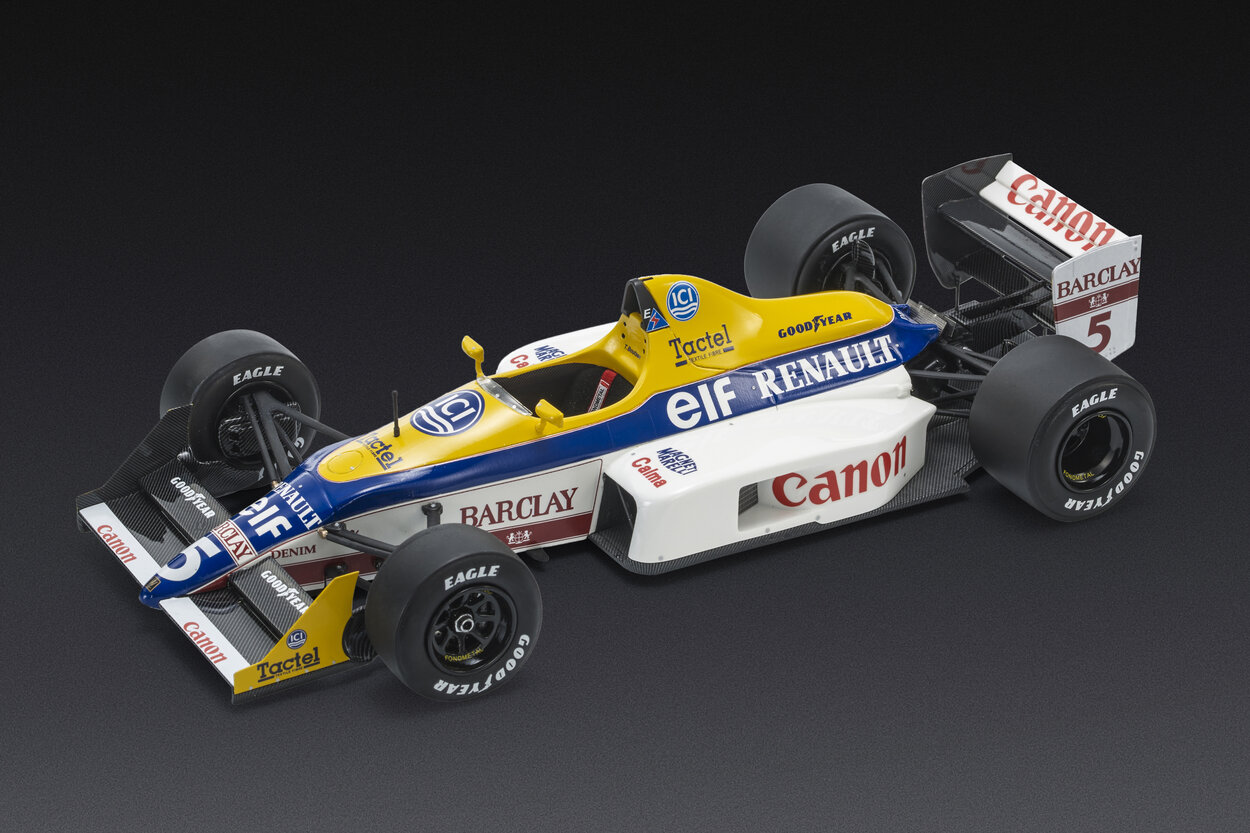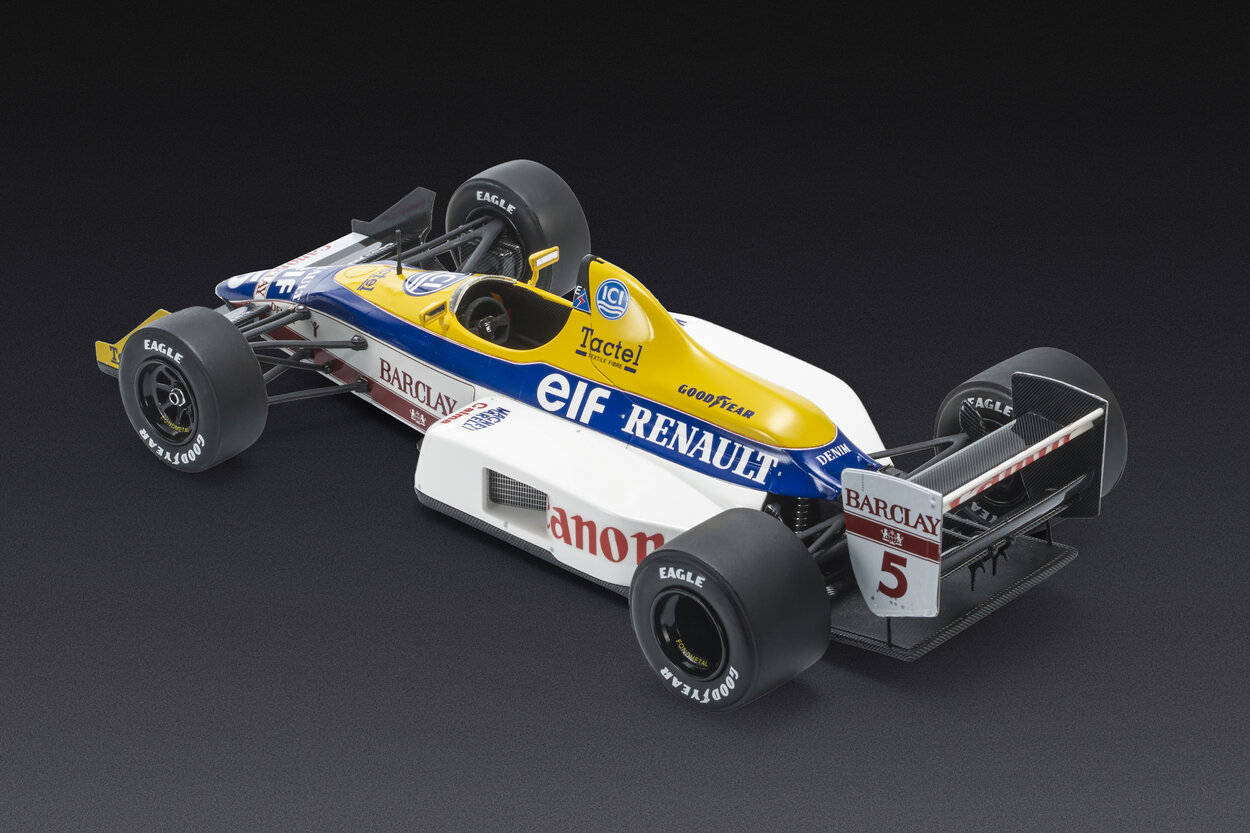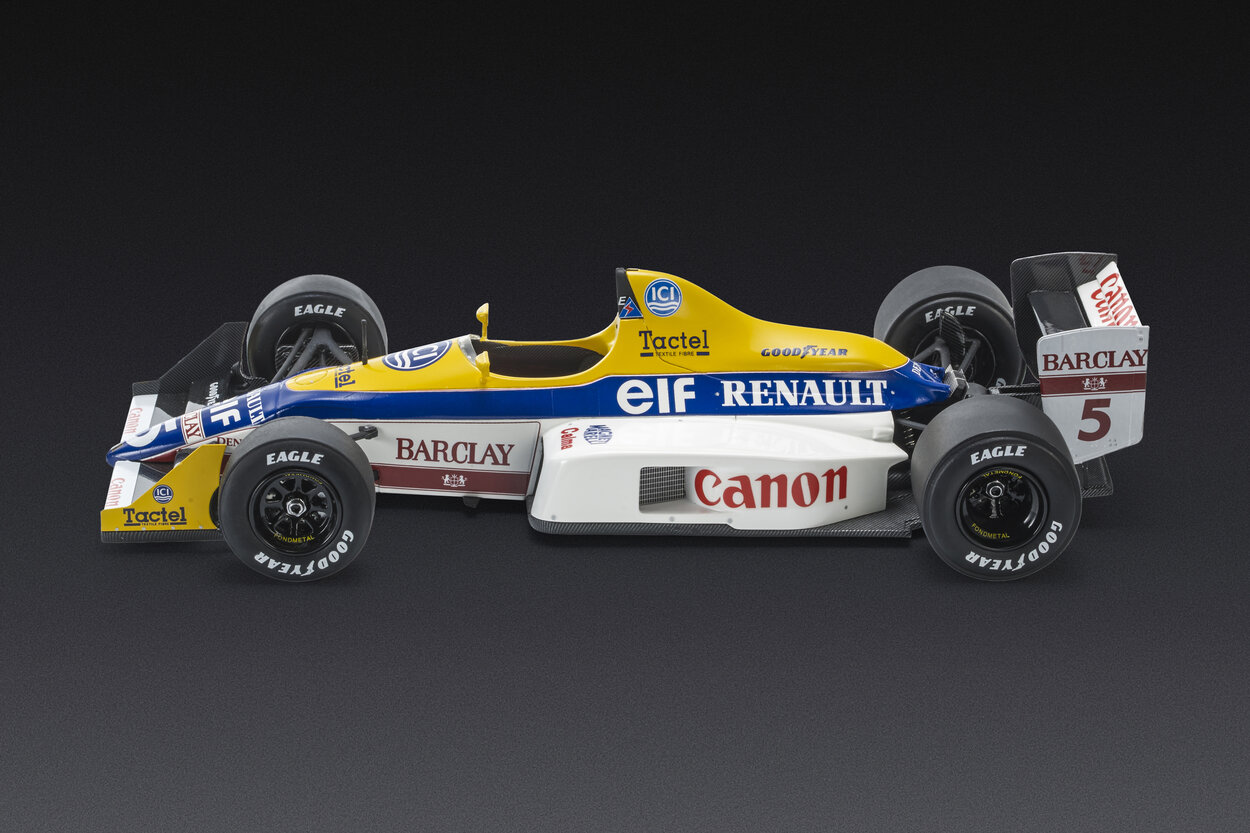Williams FW12
Losing the Honda engines in 1988, Williams suddenly loses its competitiveness. The new naturally aspirated 8-cylinder Judd engine fitted on the FW12 proves to be underpowered and unreliable. Nigel Mansell suffers twelve retirements out of fourteen Grand Prix races, while his new teammate Riccardo Patrese collects eight. Things take a turn for the better the following year when Frank Williams manages to secure the supply of the Renault 10-cylinder engine.
Engine aside, the FW12 of ’88 wasn’t a car to discard. In the only two races of the ’88 season that it finished, Mansell climbed onto the podium twice. In ’89, the FW12C makes its debut. The main difference from the previous model, of which it is an accurate evolution, lies in the bodywork housing the Renault engine, longer, larger, and heavier than the 8-cylinder Judd, along with a new air intake and various chassis modifications, all to accommodate the new power unit.

Drivers:
Riccardo Patrese: The experienced Italian driver is in his second season with Frank Williams’ team. With them, Riccardo is poised to experience a second youth. These will be the best years of his long career. No victories for him this year, but six podiums, four of which on the second step. At the end of the season, he is third in the Drivers’ World Championship standings, his best result ever up to this point.
Thierry Boutsen: The Belgian driver was called in to replace Nigel Mansell, who went to Maranello and races with Ferrari. Boutsen drives the FW12C to victory in the Canadian Grand Prix. At the same time, on that day, he achieves his first personal success in Formula 1. He will once again climb on the highest step of the podium in Australia, in the last race of the season – but with the next model. He finishes third in Hungary, Italy, and Japan. In the Drivers’ World Championship standings, he secures the fifth place.
Our model cars:

The change of pace is immediate. The Renault 10-cylinder engine brings competitiveness back to Williams. Looking at data and results, no one could guess that the ’88 and ’89 cars are essentially twins. At its debut in the 1989 Brazilian Grand Prix, Patrese starts from the front row and leads the race until he’s forced to retire with just ten laps to go. Once reliability is found, the FW12C returns to the top.
One victory, three second and three third place finishes by the FW12C propel Williams to second place in the Constructors’ Championship. Formula 1 rediscovers a protagonist it had momentarily lost.

